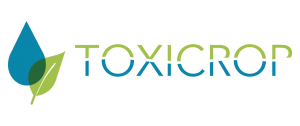WP1 | Ethics requirements
Sets out the ‘ethics requirements’ that the project must comply with and that concerns to laboratory safety, GMO authorisations and to the import/export authorisations, as required by national/EU legislations.
WP2 | Management and coordination
The Consortium will set out and implement the main activities related with the management, including finances, project implementation and coordination.
WP3 | Risk assessment of eutrophic waters in agriculture – field monitoring studies
The consortium will be investigating the contamination with cyanotoxins, in several water reservoirs and agricultural areas in the consortium countries. Biological, molecular and chemical data will be collected and used to estimate the contamination of selected areas and the risks related with food safety and human exposure.
WP4 | Risk assessment of eutrophic waters in agriculture – experimental ecotoxicology studies
The consortium will develop phytotoxicity studies, in controlled environments. The main purpose of these studies will be to gather data concerning the physiological performance of plant crops contaminated with cyanotoxins, as well as on the process of cyanotoxin uptake and accumulation in plant tissues.
WP5 | Cyanotoxin identification and quantification and development of new tools for toxin analysis
Concerns to the analysis of biological samples and identification and quantification of cyanotoxins. Moreover the consortium will work on the improvement of the methodologies for cyanotoxins analysis supported by new products and services.
WP6 | Eco-technologies for water treatment
Concerns the development of cyanotoxins remediation systems based on CWs and MSLs. First, model mesocosms will be compared concerning: i) water saturated and unsaturated, anaerobic and aerobic degradation, ii) plant presence and plant influence using systems unplanted and planted with typical plants used in CWs; iii) sand and gravel the two most used CWs substrates. In a second phase the most promising system configuration will be fully characterized for removal of cyanotoxins and toxic cyanobacteria, and up-scaled.
WP7 | Dissemination and communication
All activities of dissemination of results and communication will be implemented by the Consortium. Specific activities were establish to disseminate the project contentes and results to the main target audiences, the scientific community, stakeholders and general public.
